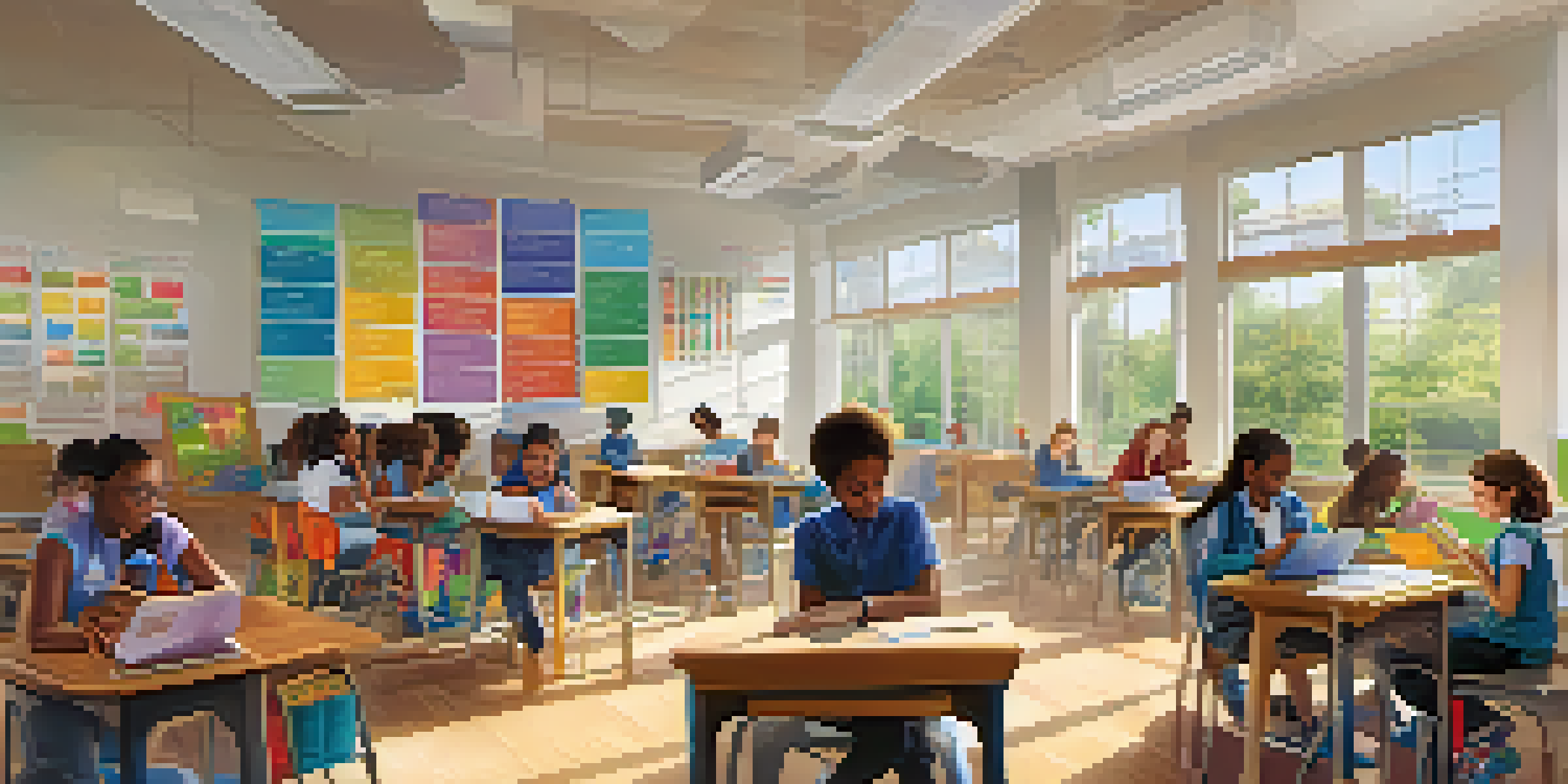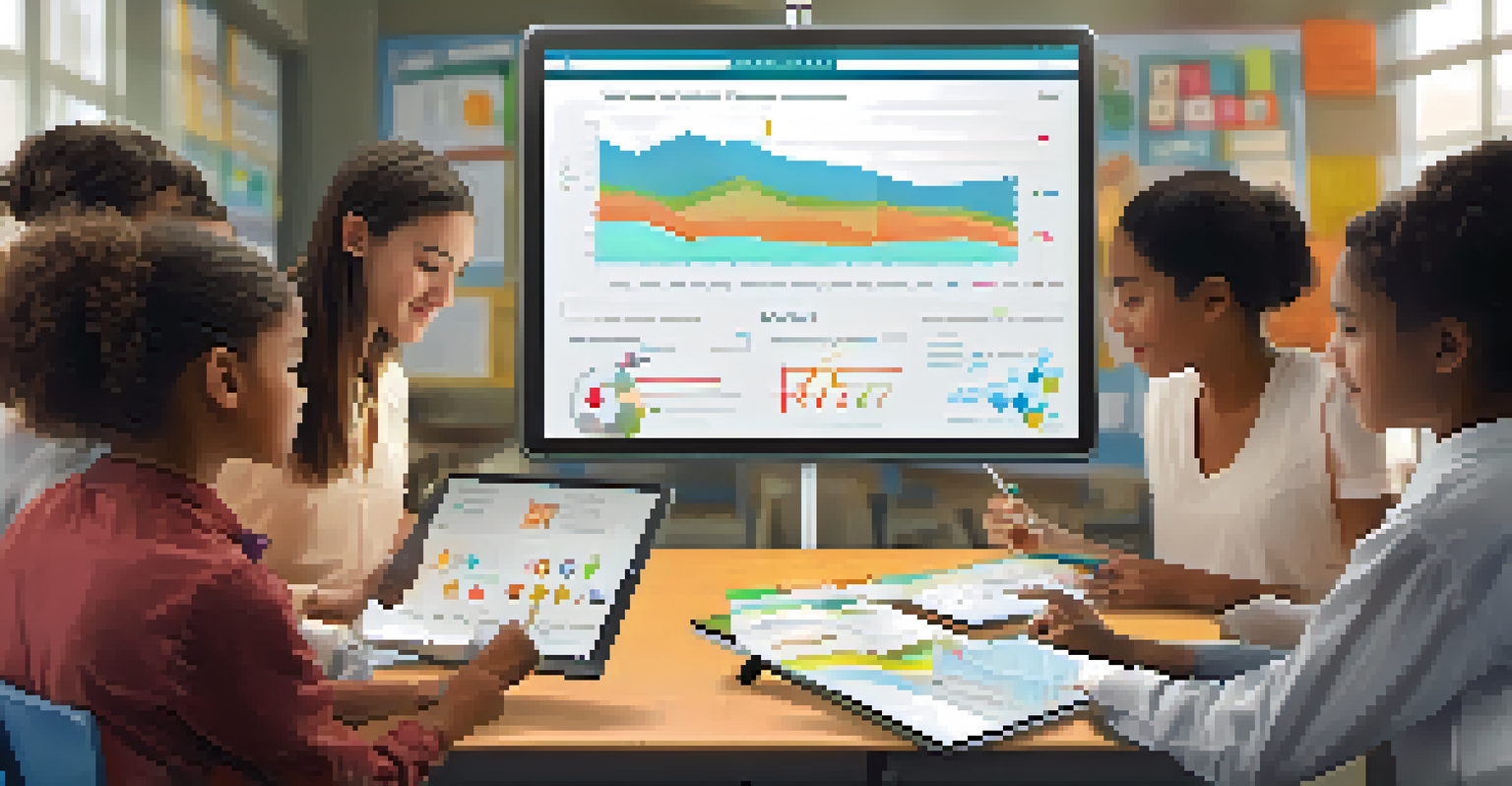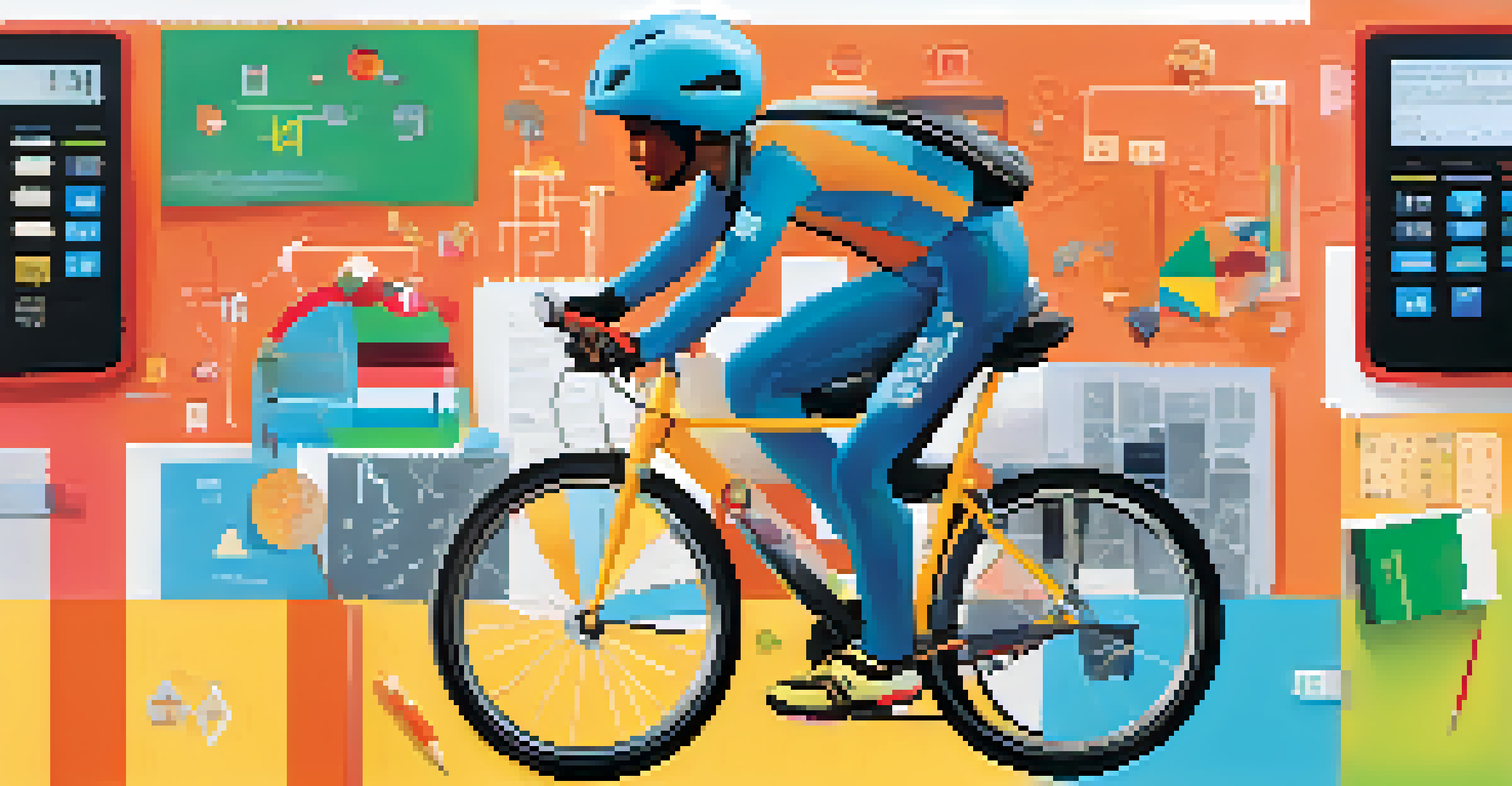The Importance of Cognitive Load in Personalized Learning

What is Cognitive Load and Why Does It Matter?
Cognitive load refers to the amount of mental effort being used in the working memory. It's crucial in educational settings because it influences how much information learners can process at once. When cognitive load is too high, it can lead to frustration and decreased retention of information, making learning less effective.
The mind is not a vessel to be filled, but a fire to be kindled.
Think of cognitive load like a backpack filled with books. If the backpack is too heavy, it becomes difficult to carry, just as excessive cognitive load can overwhelm the learner. Conversely, a manageable load allows for smoother learning and better engagement.
Understanding cognitive load helps educators create personalized learning strategies that align with each student's capacity. By managing this load, they can ensure that learners are not just accumulating information, but truly understanding and applying it.
The Three Types of Cognitive Load Explained
Cognitive load can be divided into three categories: intrinsic, extraneous, and germane. Intrinsic load is the complexity of the material itself, while extraneous load comes from how the information is presented. Germane load is the effort dedicated to processing and understanding the material.

Imagine you're learning to ride a bike. The intrinsic load involves balancing, pedaling, and steering, while extraneous load might be distractions from your environment. Germane load is the mental effort you invest in mastering the skill itself.
Understanding Cognitive Load
Cognitive load is the mental effort required for learning, and managing it is essential for effective educational experiences.
Recognizing these types helps educators tailor their approaches. By minimizing extraneous load and optimizing intrinsic load, they can foster a more effective personalized learning experience.
Personalized Learning: A Tailored Approach
Personalized learning is all about adapting educational experiences to meet individual student needs. This can involve customizing content, pacing, and assessment methods. By understanding cognitive load, educators can create more effective personalized learning paths.
Learning is not the product of teaching. Learning is the product of the activity of learners.
For instance, if a student struggles with complex math concepts, a teacher might break the material into smaller, more manageable pieces. This approach reduces cognitive load, allowing the student to grasp each part before moving on.
Ultimately, personalized learning acknowledges that every student learns differently. By managing cognitive load, educators can create a supportive environment that promotes deeper understanding and retention.
Balancing Cognitive Load for Optimal Learning
Finding the right balance of cognitive load is key to effective learning. Too much information at once can overwhelm students, while too little can lead to boredom. Educators must find that sweet spot to keep students engaged and motivated.
Consider cooking a new recipe. If you're thrown into the kitchen with all the ingredients and no guidance, it can be overwhelming. However, if the instructions are broken down step by step, you're much more likely to succeed.
Types of Cognitive Load
Cognitive load consists of intrinsic, extraneous, and germane types, each affecting how students process information.
By carefully structuring lessons and pacing material, educators can help students navigate their learning journeys more effectively, ensuring that cognitive load remains manageable.
Strategies to Manage Cognitive Load in Classrooms
There are several strategies educators can use to manage cognitive load in the classroom. Techniques like chunking information, using visuals, and providing clear instructions can help simplify complex topics. These strategies can make learning more accessible and enjoyable.
For example, using diagrams or charts can visually represent information, reducing the cognitive load required to process written text. This allows students to grasp concepts more quickly and efficiently.
By employing these strategies, educators can create a more engaging learning environment that fosters critical thinking and creativity while keeping cognitive load in check.
The Role of Technology in Personalized Learning
Technology plays a significant role in personalizing learning experiences. Educational tools like adaptive learning software can assess a student's current knowledge and adjust the content accordingly. This can help to manage cognitive load by presenting information at the right level of difficulty.
Imagine a video game that adjusts its challenge based on your skill level. If you’re struggling, it becomes easier, and if you’re excelling, it ramps up the difficulty. This kind of adaptive learning can keep students engaged and help them progress at their own pace.
Personalized Learning Benefits
Personalized learning strategies tailored to individual cognitive load can enhance student engagement and understanding.
By leveraging technology, educators can provide personalized learning experiences that effectively manage cognitive load, ensuring that each student feels supported and challenged in their learning journey.
Assessing Learning Outcomes and Cognitive Load
Assessing how well students are learning is essential for understanding cognitive load. Regular feedback and formative assessments can help educators gauge whether students are managing the material effectively. This allows for timely adjustments to teaching strategies.
Think of it like tuning a musical instrument. Regular checks ensure that everything is in harmony, helping students stay on track. If a student is struggling, educators can revisit concepts or alter their approach to better meet the learner's needs.

By continuously assessing learning outcomes, educators can create dynamic personalized learning environments that adapt to the cognitive load of each student, ultimately leading to better educational results.